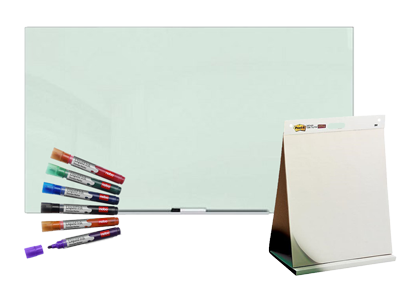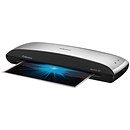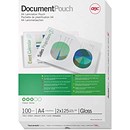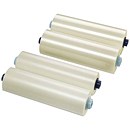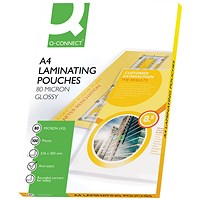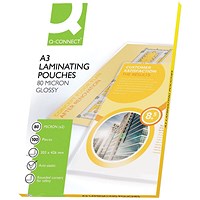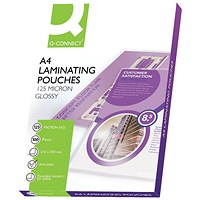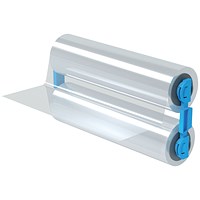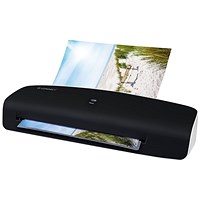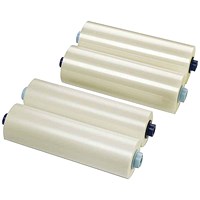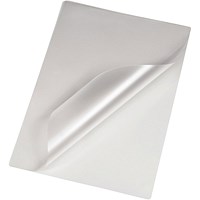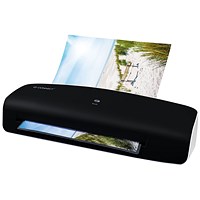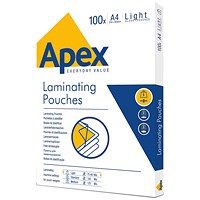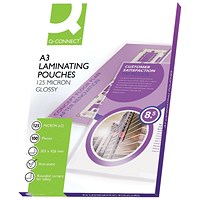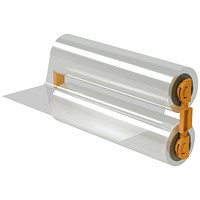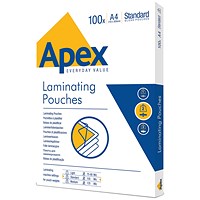Meeting & Presentation
Laminators & Pouches
Best selling products in Laminators & Pouches
Back to Top
Laminating - a glossary
- Adhesives fix laminating film to the thing being laminated. In hot lamination, the heat melts a solid adhesive to create the bond. In cold lamination, the adhesive is activated by pressure.
- Clear film. Describing a laminating film’s finish, clear film is smooth and transparent which gives documents a glossy appearance.
- Cold lamination. Cold laminators fuse laminating film by the application of pressure. Cold roll laminators can laminate wide format prints which might otherwise be damaged by heat.
- Hot lamination. In hot lamination, heat melts the adhesive on lamination film while rollers set it on the document. Heated roll laminators have the advantage of speed as they heat the glue prior to applying the film. Further, because the glue in hot lamination is solid at room temperature, heat-sealed laminated documents are less likely to warp than pressure activated laminates whose adhesive is a viscous fluid.
- Laminating film is the plastic film that encases the laminated document. Laminating film takes the form of laminating pouches and laminating rolls.
- Laminating pouches are variously sized sleeves sealed on one or more sides. The document is inserted into the pouch before lamination.
- Laminating rolls are continuous. Rolls of film are supplied as a pair and documents pass between the two layers. The laminated document is then trimmed to size.
- Lamination is the permanent fusing of a document with one or two sheets of laminate.
- Matt film is less reflective than clear film and can give a slightly granular or frosted finish.
- Micron. The thickness of laminating film is measured in microns. A micron is a micrometre or 1/1000 of a millimetre. Manufacturers usually express the capacity of laminators in microns. Take care – because the thickness sometimes refers to one sheet of film, sometimes to two. Usually, though, both are expressed, e.g. “150 (2x75) microns.”
- Over-laminate. To over-laminate is to laminate on only one side of a document. This reduces thickness and costs of materials.
- Self-laminating pouches / self-adhesive laminating pouches have peel and seal adhesive for D-I-Y laminating requiring no sealing equipment.
- Size. Roll laminators can laminate documents of all sizes – either the laminate is trimmed automatically by an integrated trimmer or the document is trimmed after laminating.
Pouches come in set sizes: A2, A3, A4, A5 and various card and photo sizes such as credit card (54x86mm). - Speed and temperature are important variables in laminating. Thicker film may need a higher temperature (or a slower speed). By varying the speed at which a document is passed through a laminator, the amount of heat the laminate is exposed to can be controlled. More advanced machines have variable speed control.
- Trimmer. Some roll laminators contain integrated trimmers which cut surplus film off laminated documents.
Back to Top
12 Apr
Dave
10 Apr
SHEILA
5 Apr
Tony Martin
2 Apr
Beata Janina Beata Janina
2 Apr
Martin McNally
1 Apr
MRS BEVERLY CHESTER
1 Apr
Marisa Ricketts
31 Mar
Leonard smith
29 Mar
CustomerJ R STOKER
27 Mar
Liz
13 Mar
Dr Paul Yeomans
11 Mar
Patricia Hamilton-Davies
Rated 4.8 / 5 based on
5,024 reviews
.
Showing our 4 & 5 star reviews.
Back to Top
